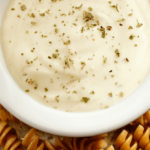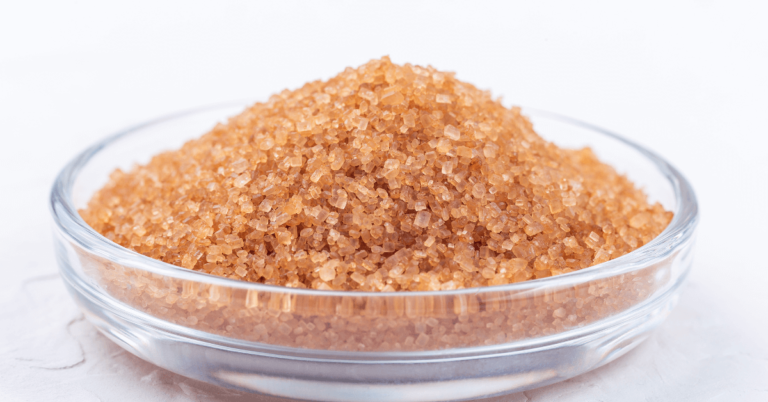How to Make Your Alfredo Sauce Thicker: A Culinary Guide
Part 1: Introduction to Alfredo sauce thicker.
Alfredo sauce thicker , a staple in Italian cuisine, has journeyed far beyond the borders of Italy, capturing the hearts of pasta lovers worldwide. But, what’s the story behind this creamy delight? And more importantly, how can you perfect its consistency at home?
The Origins and Evolution of Alfredo Sauce
Alfredo sauce began its journey in Rome, crafted by Alfredo di Lelio in the early 20th century. Originally, it was a simple emulsion of butter and Parmigiano Reggiano, but as it crossed oceans, heavy cream found its way into the recipe, giving it that rich, velvety texture we all adore.
Basic Ingredients: A Symphony of Simplicity
At its core, Alfredo sauce harmonizes just a few key ingredients: unsalted butter, garlic, heavy cream, and Parmigiano Reggiano. This simplicity, however, often leads to a common kitchen conundrum: achieving the perfect thickness.
The Thickening Challenge: A Common Culinary Conundrum
Have you ever found yourself whisking a pot of Alfredo sauce, only to realize it’s just too runny? You’re not alone. Many home chefs face this dilemma. But fear not, as there are several foolproof methods to bring your sauce to that luxuriously thick consistency.
In the upcoming sections, we’ll dive into various techniques, from the traditional to the innovative, ensuring your Alfredo sauce is nothing short of perfection. So, grab your whisk, and let’s embark on this creamy culinary adventure!
Part 2: Thickening Alfredo Sauce with Cheese
Now, let’s delve into the heart of Alfredo sauce – the cheese. It’s not just an ingredient; it’s the game-changer for that dreamy thickness. But how exactly does cheese work its magic in the sauce? And what types of cheese should you reach for?
The Role of Cheese in Alfredo Sauce: More Than Just Flavor
Cheese in Alfredo sauce isn’t just a flavor enhancer; it’s a thickening powerhouse. When melted into the sauce, it creates a rich, cohesive texture. The key lies in the cheese’s melting properties and its ability to emulsify with the other ingredients, leading to a thicker, smoother sauce.
Choosing the Right Cheese: A Crucial Decision
The traditional choice for Alfredo sauce is Parmigiano Reggiano. Its nutty, savory flavor and excellent melting qualities make it ideal. However, you can also experiment with other types like Pecorino Romano or Grana Padano for a different twist. Remember, the quality of cheese directly impacts the sauce’s final texture and taste.
Step-by-Step Guide to Adding Cheese for Perfect Consistency
- Grate the Cheese Finely: This ensures it melts evenly and quickly.
- Add Gradually: Slowly stir in the cheese to avoid clumping.
- Low Heat is Key: Keep the sauce on low heat to prevent the cheese from separating.
- Consistency Check: Add cheese until you reach the desired thickness.
By following these steps, you’ll transform your runny Alfredo sauce into a thick, creamy masterpiece. But, it’s not just about adding cheese; it’s about understanding the process and adjusting it to your taste.
Part 3: Reducing Heavy Cream for Thickness
Moving beyond cheese, let’s turn our attention to another pivotal ingredient in Alfredo sauce – heavy cream. Reducing heavy cream is a classic culinary technique that not only thickens the sauce but also enriches its flavor profile. But how does this process work, and what are the best practices to achieve the perfect reduction?
The Science Behind Cream Reduction: A Flavorful Thickening
When you reduce heavy cream, you’re essentially evaporating its water content through simmering. This process concentrates the flavors and increases the fat content, resulting in a thicker, more luxurious sauce. It’s a delicate balance, though; too much reduction can lead to a sauce that’s overly rich and heavy.
Techniques for Perfect Cream Reduction
- Start with Quality Cream: Opt for high-fat, fresh heavy cream for the best results.
- Simmer, Don’t Boil: Gently simmer the cream to reduce it. Boiling can cause it to separate.
- Stir Regularly: This prevents the cream from sticking to the bottom of the pan and burning.
- Patience is Key: Reduction takes time. Rushing it can spoil the sauce’s texture.
Balancing Thickness and Flavor
As the cream reduces, taste it periodically. You’re looking for a balance where the sauce is thick enough to coat the back of a spoon but not so thick that it overwhelms the palate. Remember, you can always add more cream or a bit of pasta water to adjust the consistency.
Part 4: Using Flour with Pasta
Now, let’s shift our focus to a less conventional, yet effective method of thickening Alfredo sauce: using flour-coated pasta. This technique leverages the starch from the pasta to add body to the sauce. But how exactly does this work, and what are the best practices for achieving the desired result?
The Role of Starch in Sauce Thickening
When pasta is tossed in flour and then cooked, it releases starch into the cooking water. This starchy water, when mixed with your Alfredo sauce, acts as a natural thickener. It’s a subtle yet effective way to add body to the sauce without altering its fundamental flavor.
Best Practices for Flour-Coated Pasta
- Generously Flour the Pasta: Before boiling, toss your fresh pasta in a good amount of flour.
- Reserve Pasta Water: Save some of the starchy pasta water before draining.
- Combine Gradually: Slowly mix the pasta water into your sauce, stirring constantly until the desired thickness is achieved.
The Impact on Sauce Texture and Flavor
This method not only thickens the sauce but also gives it a silky, glossy appearance. The starch interacts with the fats and liquids in the sauce, creating a smooth and cohesive texture. Plus, it’s a great way to add thickness without additional ingredients that might overpower the delicate balance of flavors in Alfredo sauce.
Part 5: Cornstarch Slurry Method Alfredo sauce thicker
Cornstarch is a versatile thickening agent, often used in sauces and gravies. In the context of Alfredo sauce, a cornstarch slurry can be a quick fix for a sauce that’s too thin. But what’s the best way to use cornstarch without compromising the sauce’s flavor and texture?
Understanding Cornstarch as a Thickener
Cornstarch is a starch derived from corn, used to thicken liquids in a process called gelatinization. When mixed with cold water and then added to a hot liquid, it thickens the mixture without affecting the flavor. This makes it an ideal choice for subtly adjusting the consistency of your Alfredo sauce.
Preparing and Incorporating a Cornstarch Slurry
- Mix Equal Parts Cornstarch and Cold Water: Start with about 2 tablespoons of each.
- Whisk Until Smooth: Ensure there are no lumps in the slurry.
- Add Gradually to the Sauce: Stir in a small amount of the slurry, then bring the sauce to a simmer.
- Check Consistency: Add more slurry if needed, but do so sparingly to avoid a gloopy texture.
Tips for Avoiding Common Mistakes with Cornstarch
- Always Use Cold Water: Hot water can cause the cornstarch to clump.
- Don’t Overheat: Excessive heat can break down the starch and thin the sauce again.
- Balance is Key: Use just enough to thicken the sauce; too much can make it taste chalky.
By following these steps, you can effectively use cornstarch to achieve the perfect thickness for your Alfredo sauce, without altering its rich, creamy flavor.
Part 6: Alternative Thickening Agents
While cheese, heavy cream, and cornstarch are common go-tos for thickening Alfredo sauce, the culinary world offers a plethora of other options. Exploring these alternative thickening agents can not only solve your sauce dilemmas but also add a new dimension to your cooking. Let’s dive into some of these alternatives and their unique characteristics.
Exploring Other Thickening Agents
- Roux: A mixture of flour and butter cooked together, roux is a classic thickener in French cuisine. It can add a nutty flavor and creamy texture to your sauce.
- Arrowroot: Similar to cornstarch but with a more neutral flavor and glossy finish. It’s also gluten-free, making it a great option for those with dietary restrictions.
- Beurre Manié: A paste made from equal parts flour and softened butter, this can be whisked into the sauce to thicken it without the raw taste of flour.
Pros and Cons of Each Agent
- Roux: Adds depth of flavor but requires additional cooking time.
- Arrowroot: Excellent for a glossy, smooth sauce but can become slimy if overcooked.
- Beurre Manié: Easy to incorporate but can make the sauce too rich if used excessively.
Application Techniques for Alfredo Sauce
When using these thickeners, it’s important to consider the impact they’ll have on the sauce’s flavor and texture. Introduce them gradually, and always taste as you go. The goal is to enhance the sauce, not overpower its delicate balance of flavors.
Part 7: Adjusting Consistency and Flavor
You’ve thickened your Alfredo sauce, but the journey doesn’t end there. The final step is fine-tuning the consistency and flavor to achieve culinary perfection. This part of the process is where your personal taste and culinary instincts shine. Let’s explore how to make those final adjustments that transform a good sauce into a great one.
Balancing Thickness with Flavor
The thickness of your sauce should complement, not overpower, its flavor. If your sauce has become too thick, don’t hesitate to thin it out with a bit of pasta water or additional cream. Conversely, if it’s too thin, consider a bit more cheese or your thickening agent of choice. The key is to find that sweet spot where texture and taste harmoniously coexist.
Adjusting Seasoning and Ingredients Alfredo sauce thicker
- Salt and Pepper: These basic seasonings can profoundly impact the sauce. Add gradually and taste as you go.
- Garlic and Herbs: A little extra garlic or a sprinkle of fresh herbs like parsley can brighten the sauce.
- Acidity: A splash of lemon juice or white wine can cut through the richness and add a new flavor dimension.
Tips for Reheating and Maintaining Consistency
Alfredo sauce can be tricky to reheat as it can separate or become too thick. Gently reheat the sauce over low heat, adding a little cream or pasta water to adjust the consistency. Avoid boiling, as this can cause the sauce to break.
Part 8: FAQs on Making Alfredo sauce thicker
In this final section, let’s tackle some of the most frequently asked questions about making Alfredo sauce. These FAQs are gathered from common queries and concerns, providing you with expert answers and tips to enhance your sauce-making skills.
Q1: Why Does My Alfredo Sauce Keep Coming Out Too Thin?
A: The likely culprits are insufficient reduction of heavy cream or not enough cheese. Remember, reducing the cream concentrates its flavor and thickness, and cheese adds body. Ensure you’re allowing enough time for these ingredients to work their magic.
Q2: Can I Make Alfredo Sauce Thicker Without Adding More Cheese or Cream?
A: Absolutely! Consider using a cornstarch slurry, roux, or even flour-coated pasta. These methods can thicken your sauce without significantly altering the flavor profile.
Q3: How Do I Fix Alfredo Sauce That’s Too Thick?
A: If your sauce is overly thick, gently thin it with pasta water or a splash of cream. The starch in pasta water is particularly effective for adjusting the consistency without losing creaminess.
Q4: Can I Make Alfredo Sauce Ahead of Time?
A: Yes, you can make Alfredo sauce in advance. However, be mindful when reheating, as the sauce can separate or become too thick. Reheat on low heat, stirring constantly, and add a bit of cream or pasta water if needed.
Q5: How Can I Add More Flavor to My Alfredo Sauce?
A: Enhance the flavor with seasonings like salt, pepper, and garlic. Fresh herbs, a squeeze of lemon, or a splash of white wine can also add depth and brightness to the sauce.
Q6: Is It Possible to Make a Healthier Alfredo Sauce?
A: For a lighter version, try using half-and-half instead of heavy cream, or incorporate pureed cauliflower for creaminess without the extra fat. You can also experiment with lower-fat cheeses.
- In the section discussing the use of cheese in Alfredo sauce, you can link to the article about vegetarian diets and pasta. This can be particularly useful for readers interested in vegetarian options. Suggested Anchor Text: “For those following a vegetarian diet, explore our comprehensive guide on vegetarian diets and pasta.”
- When mentioning the use of heavy cream in the sauce, a link to the article on healthy ground turkey casserole recipes can offer readers a healthier alternative to pair with the sauce. Suggested Anchor Text: “Looking for a healthier meal option? Pair your Alfredo sauce with our healthy ground turkey casserole recipes.”
- In the section about reheating Alfredo sauce, include a link to the article on air fryer breakfast potatoes. This can provide readers with additional ideas on using the air fryer for reheating or preparing side dishes. Suggested Anchor Text: “Discover more about versatile cooking methods with our guide on crispy air fryer breakfast potatoes.”

How do you make Alfredo sauce thicker?
- Total Time: 15 minutes
- Yield: Serves 4
- Diet: Vegetarian
Description
This recipe for a thicker Alfredo sauce offers a rich, creamy, and velvety texture perfect for coating your favorite pasta. It’s an enhanced version of the classic Alfredo sauce, made thicker with a few simple tweaks to the traditional recipe. Ideal for those who love their pasta sauce with a luxurious consistency.
Ingredients
- 1 cup heavy cream
- 1/2 cup unsalted butter
- 1 1/2 cups freshly grated Parmigiano Reggiano cheese
- 2 cloves garlic, minced
- Salt and pepper, to taste
- Optional: 1-2 tablespoons all-purpose flour or cornstarch (for extra thickness)
Instructions
- In a medium saucepan, melt the butter over medium heat.
- Add minced garlic and sauté for about 1 minute until fragrant.
- Pour in the heavy cream and bring to a simmer. Reduce heat to low and continue to simmer for 3-4 minutes to slightly thicken the cream.
- Gradually add the grated Parmigiano Reggiano cheese, stirring continuously until the cheese is fully melted and the sauce is creamy.
- For additional thickness, whisk in 1-2 tablespoons of flour or cornstarch. Cook for another 2 minutes, stirring constantly.
- Season with salt and pepper to taste.
- Serve hot over your favorite pasta.
Notes
- For best results, use freshly grated cheese as it melts better than pre-grated cheese.
- Adjust the thickness by adding more or less flour/cornstarch as per your preference.
- If the sauce becomes too thick, thin it out with a little pasta water.
- Prep Time: 5 minutes
- Cook Time: 10 minutes
- Category: Sauce
- Method: Simmering
- Cuisine: Italian






